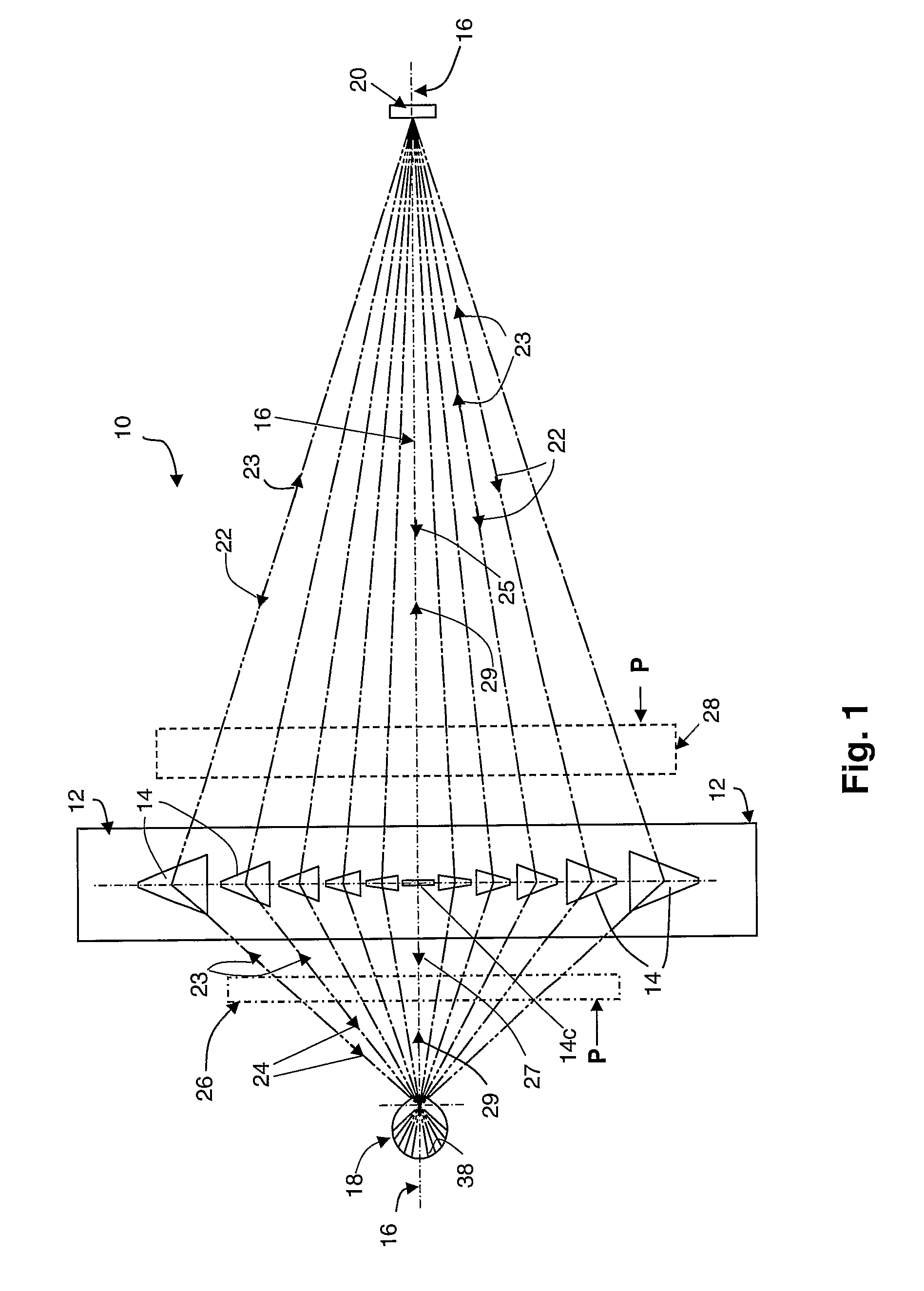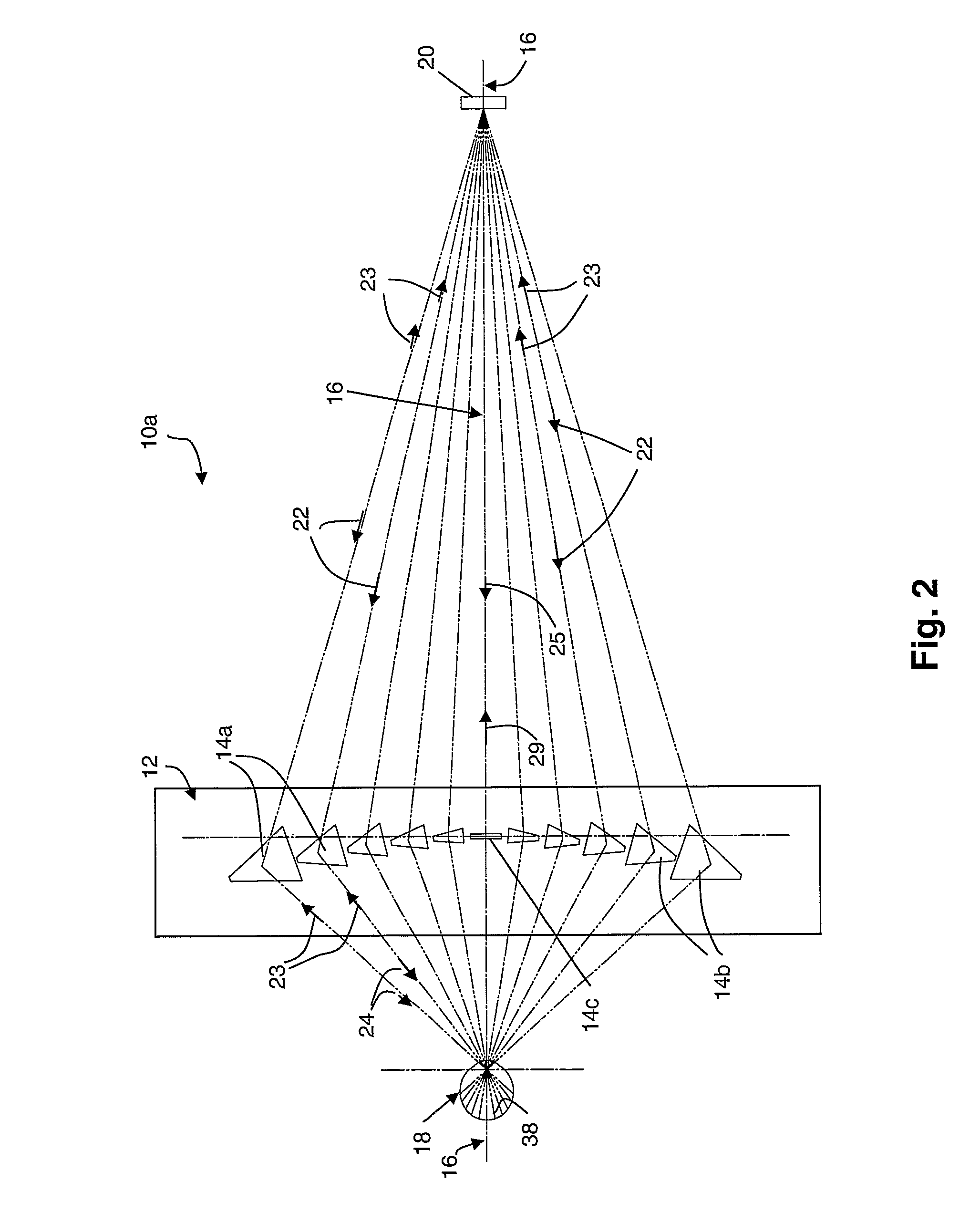Characterising eye-related optical systems
a technology of optical systems and optical components, applied in the field of optical components of eye-related optical systems, can solve the problems that inaccuracy is unlikely to make this worthwhile, and achieve the effect of length of ey
- Summary
- Abstract
- Description
- Claims
- Application Information
AI Technical Summary
Benefits of technology
Problems solved by technology
Method used
Image
Examples
Embodiment Construction
[0030]Having portrayed the nature of the present invention, particular examples will now be described with reference to the accompanying drawings. However, those skilled in the art will appreciate that many variations and modifications can be made to the examples without departing from the scope of the invention as outlined above.
DESCRIPTION OF THE SEVERAL VIEWS OF THE DRAWINGS
[0031]In the accompanying drawings:
[0032]FIG. 1 is a basic diagrammatic plan of the basic optical layout of the first example of an instrument formed in accordance with the present invention in which the deflector means comprises and array of prisms.
[0033]FIG. 2 illustrates one possible modification to the example of FIG. 1 wherein the prisms comprising the deflector array are tilted and arranged in an arc.
[0034]FIG. 3 is an enlarged and more detailed diagrammatic side elevation of the optical layout of the instrument of FIG. 1.
[0035]FIG. 4 is an enlarged partial detail of FIG. 3 showing some additional to fea...
PUM
 Login to View More
Login to View More Abstract
Description
Claims
Application Information
 Login to View More
Login to View More - R&D
- Intellectual Property
- Life Sciences
- Materials
- Tech Scout
- Unparalleled Data Quality
- Higher Quality Content
- 60% Fewer Hallucinations
Browse by: Latest US Patents, China's latest patents, Technical Efficacy Thesaurus, Application Domain, Technology Topic, Popular Technical Reports.
© 2025 PatSnap. All rights reserved.Legal|Privacy policy|Modern Slavery Act Transparency Statement|Sitemap|About US| Contact US: help@patsnap.com



